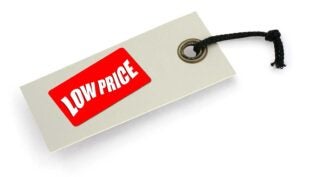Take Control of Your Small Business: Balance Your CAC and LTV
By: Susan Solovic

Small business owners focused on merchandising for the next major shopping holiday and worried about making next week’s payroll often have a difficult time taking a step back and looking at longer-range goals. Failing to understand, form and implement a strategy for long-term success, however, will put you on a slow road to failure.
There are two numbers that you have to “balance” properly if you want to assure long-term success:
- The cost of acquiring a customer (CAC), and
- The customer’s lifetime value (LTV).
Let’s start with the obvious lesson: If the cost of acquiring a customer is greater than that customer’s lifetime value, you’re in big trouble. Yes, that’s obvious, but the story’s not quite that simple. If you’re a startup or for some other reason don’t have adequate financial data (sales and marketing)—maybe your record keeping isn’t good enough—you’re operating in the dark.
Estimating these numbers as a startup is a necessity, but once you start marketing, buying merchandise, and making sales, you must have a solid system in place that captures and properly categorizes your income and your expenses. If you do that, it puts you in a position to correctly calculate CAC and LTV of a customer, and with those numbers you can make smart decisions going forward. Let’s see how those two vital indicators are calculated.
Formula for CAC
CAC is simply all the costs—sales and marketing, basically—that go into acquiring a new customer over a given period of time. If you spend $100 in one month to acquire 100 new customers in one month, your CAC is $1.
This is pretty straightforward once your business gets rolling. However, there can be times when it gets bumped out of whack. For example, if you’re starting a new business, you may pump extra money into marketing in the beginning and be in a position to throttle back a little later when you’re better established.
Formula for LTV
The simplest formula for how to work out LTV is to multiply three numbers: the value (net profit) of each sale to a customer, the number of sales made to a customer in a year, and the number of years a customer remains a customer (if a customer drops out sooner than one year, this would be a fraction). The formula then is:
LTV = (Value of a sale) x (Number of sales) x (Life of customer in years)
If your CAC roughly equals your LTV, your marketing efforts are not paying off. Having information like this tells you that you need to:
- Increase LTV: up-sell, raise prices, offer bigger ticket items, lengthen the life of a customer,
- Cut or optimize your marketing budget: automate, segment better, find the right channels, etc., or
- Do both of the above.
LTV modeling for decision making
Once you have good historic numbers for your CAC and LTV models you can look for opportunities. Running at an LTV ratio of 3:1 (LTV:CAC) is generally considered good. (You’ll need to ultimately determine the LTV best for your small business.) If you find yourself in a position where you’re doing even better than that, you might consider taking some of that extra money you’re making and plowing it back into your business to grow your customer base.
The other side of that coin is that if you notice your ratio slipping, it gives you a good early warning sign that something may be hurting your business. It could be that your product or service is getting outdated and customers are dropping away at a faster level than has been your history.
If you have good numbers for your CAC and LTV you are in a much stronger position to understand what’s happening in your business and make the midcourse corrections necessary to keep it strong.












